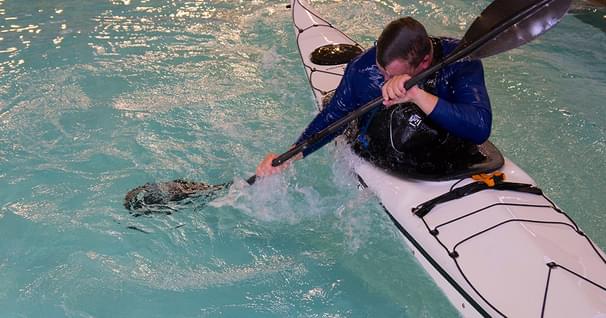3 Golden Rules of Whitewater Paddling
The 3 Golden Rules of whitewater paddling are a set of rules that all paddlers need to apply, regardless of the type of paddling being done. You need to separate your upper and lower body movements, use the power of your torso, and maintain control of your kayak with an active blade.
1. Separate your body movements
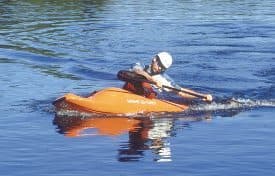
The best kayakers have mastered the art of letting their upper and lower bodies work independently of, yet cooperatively with, each other. This means there needs to be a distinct separation of movements at the hips. Early on you will become comfortable with this separation as it applies to leaning forward and backward. As you progress, it will become a key ingredient of balancing your boat on edge and staying ahead of your boat as it spins.
2. Use the power of your torso
To make the most of each stroke, you'll need to use much more than just your arm and shoulder muscles. Whether you're propelling the boat or turning it, your goal is to harness the power available from your entire upper body. We refer to this as torso rotation. It is the way you get your stomach and lower back muscles involved with your strokes. Using these larger muscle groups will maximize the strength of each stroke, and will improve your stamina as your efforts are spread over more muscles.
There are three components to torso rotation: the winding up of the body, the planting of a pivot blade, and the unwinding of the body. To wind up, turn your upper body at the hips in the direction you want to go. At this point, your stomach and chest should no longer face the direction that your kayak does. Once your body is wound up, plant your paddle blade completely in the water as a pivot. As you push or pull on this pivot blade, draw on your stomach muscles to force the body back to its (unwound) position of rest. This act of using the stomach muscles to return your body to its position of rest is what we refer to as unwinding the body. One applicable analogy is that of an elastic band. The further you stretch it, the more it will sting when it makes contact! Similarly, the more you wind up, the more power you will have available to you. It would be excessive to fully wind up your body for every single stroke, but your torso muscles should always be involved.
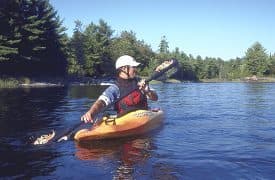
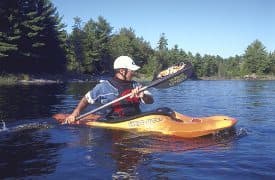
Torso rotation is also an important way of protecting your shoulders from injury. As a rule of thumb, you want to keep your hands in front of your upper body. By turning your whole torso, you can reach as far back as you want with a blade and still be in a safe position, while at the same time harnessing more power for your strokes.
3. Maintain control with an active blade
Today's whitewater kayaks are incredibly responsive. As such, they are very easy to manoeuvre, but are more susceptible to being pushed around by even the smallest river features. Whereas longer boats can cruise through waves or different currents with less effort, smaller boats don't track or maintain their speed as well. The only way to truly control them is to have an active blade in the water. This means it's important to get your next stroke in the water as soon as the one you are taking is finished. Having a blade in the water allows you to take an active role in deciding what your boat will do, rather than reacting to the things that happen to it. Keeping this rule in mind will help you paddle in a straight line, carve smooth eddy turns, punch through crashing waves, and perform increasingly advanced moves.
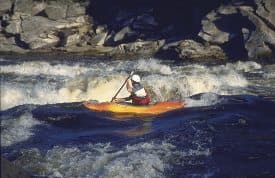
Ken Whiting was the 1997/98 World Whitewater Freestyle Champion. He has produced an award-winning series of instructional kayaking books and DVDs, and leads kayaking trips to Chile. Look for his new book 'The Ultimate Guide to Whitewater Kayaking', and video 'The Ultimate Guide to Sea Kayaking'. Check out www.helipress.com
Related Articles
By changing how you edge and balance your boat you can increase your stability and adaptability. Using…
Whether you were new to paddling in 2018 or you're an experienced paddler, you can never stop learning.…
Mention “pool session” and the first image that pops into most kayakers minds is a class in how to roll.…
Photo Credit: Darlene Patterson Many people who have paddled for years can't keep a canoe on a straight…


